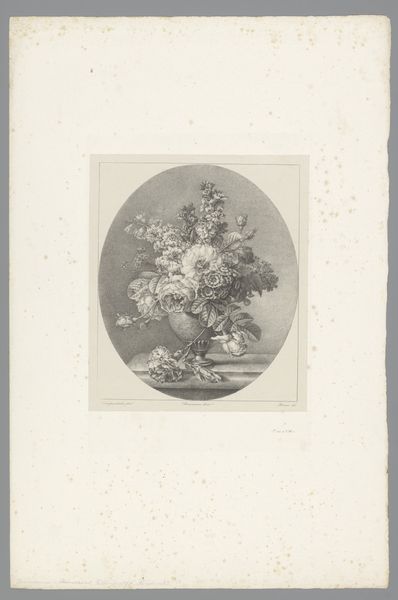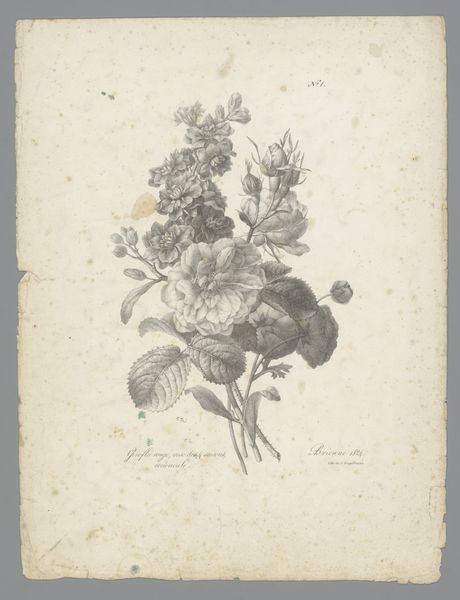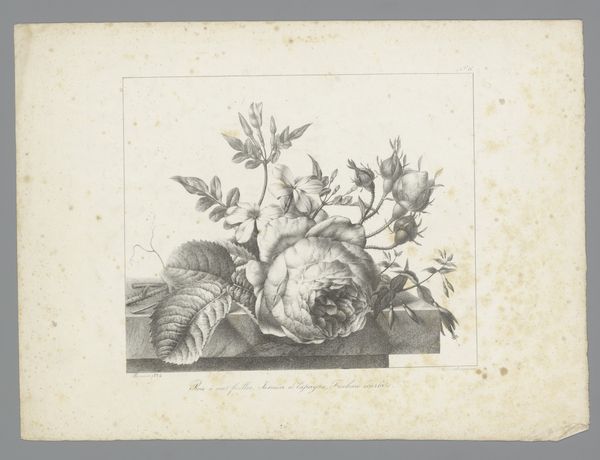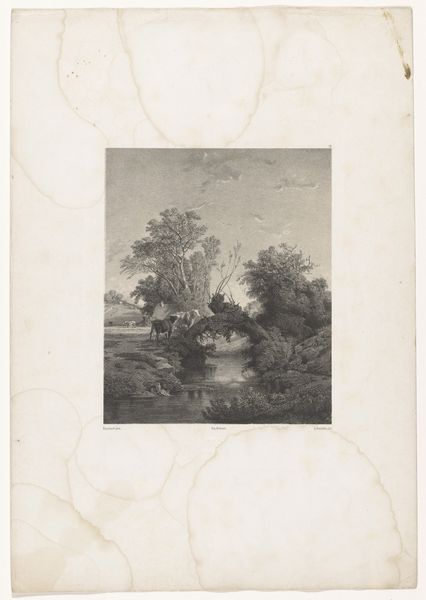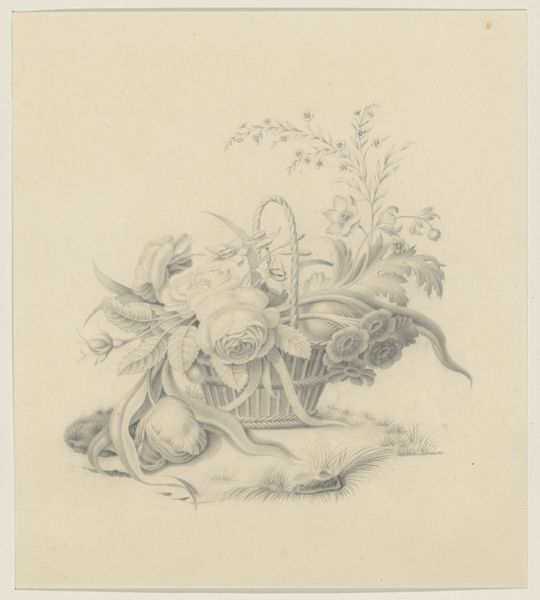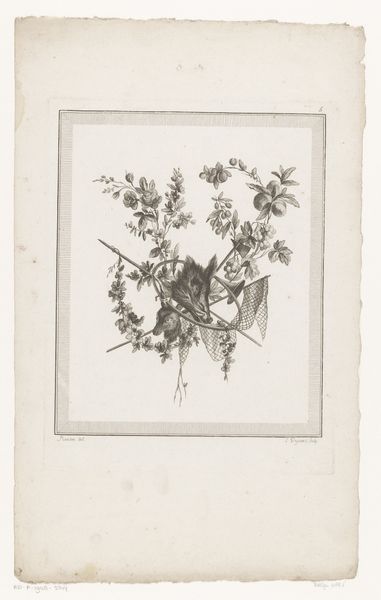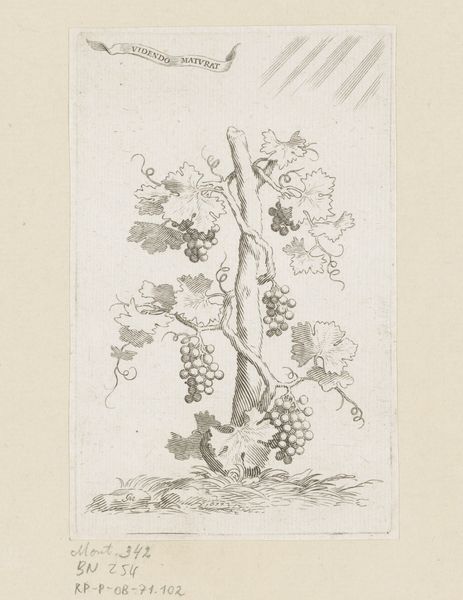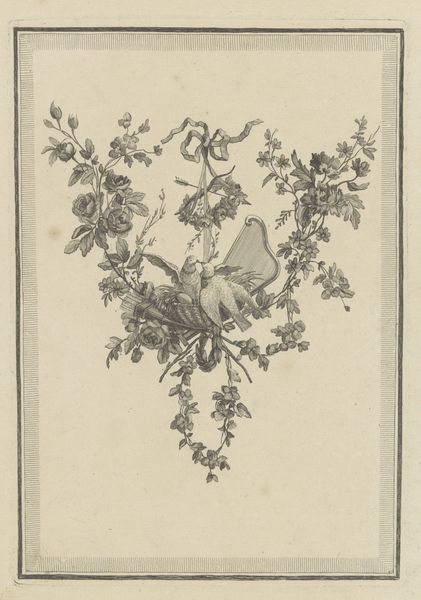
drawing, paper, pencil
#
portrait
#
drawing
#
paper
#
form
#
romanticism
#
pencil
#
line
#
genre-painting
#
realism
Dimensions: height 365 mm, width 268 mm
Copyright: Rijks Museum: Open Domain
Curator: Let's examine this drawing, "Boeket met koolroos en narcis in een vaas" or "Bouquet with cabbage rose and daffodil in a vase," created around 1825 by Auguste Piquet de Brienne. It's currently held at the Rijksmuseum. What's your initial reaction? Editor: It feels…fragile. The delicate pencil strokes and the subdued palette give it a fleeting, ephemeral quality, like the flowers are on the verge of wilting right before your eyes. Curator: Indeed. Drawings like this played a fascinating role in the early 19th century. Beyond their aesthetic value, they document the increasing cultivation and hybridisation of flowers among the bourgeoisie. Think of it as a visual record of status and taste, botanical knowledge made accessible and aspirational. Editor: Interesting. I immediately focus on the way the light interacts with the surfaces. Notice the density of lines creating the texture of the cabbage rose. It emphasizes the physical nature of both flower and drawing through layering and shadow. I want to examine the different pencils he used and the support of the paper; were these materials commercially produced or unique to his process? Curator: A very pertinent question! It leads us to consider artistic training. Was Piquet de Brienne formally schooled, and did that affect his choice of commercially-available tools and subjects? Were these drawings exhibited, traded, or purely personal endeavors? Editor: And the very choice of flowers themselves—cabbage roses were painstakingly bred. Doesn't it highlight a certain control over nature mirroring societal structures and perhaps wealth display? Curator: Precisely! Flowers in art reflect deeply embedded social meanings around femininity, wealth, and even mortality. Genre painting that utilizes form. Think of the flower market becoming a booming institution. Piquet's choice of subject also indicates patronage or lack thereof. Was this an exercise in artistic skill to obtain social access and wealth? Editor: Considering the level of detail, it had to be a labor of love. A clear process for someone devoted to observation, revealing an emotional impact beyond merely botanical illustration. I find his skill amazing considering the material and technology of the time. Curator: This work shows a dialogue between art and history. We discussed a variety of interesting considerations about context today. Editor: An astute combination of production, presentation and social reflection! A great piece that provides information about both artist and patron, labor, economy, social history.
Comments
No comments
Be the first to comment and join the conversation on the ultimate creative platform.
